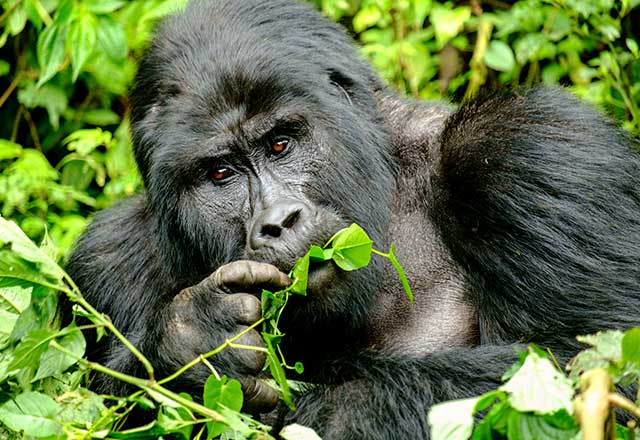The evolution of primate foot shape has been the subject of research for decades. This is largely because learning about foot construction helps us better understand how primates move and, in turn, the origins of primate behavior. In general, scientists can understand how animals move based largely on how their feet look, and especially by studying the shapes of the bones in their feet. For example, animals that spend much of their time on land tend to have wider, flatter feet (e.g., elephants) while animals that spend more time in trees or water have more flexible feet (e.g., seals). Further, much of our current understanding of why human feet look the way they do has come from comparing our own foot anatomy with those of our evolutionary neighbors, the great apes. Thus, by focusing on the shape of the foot, researchers can begin to understand how animals might exist in their native environments.
The Importance of the Calcaneus
Previous work has focused on how differences in the shape of the heel bone, called the “calcaneus,” among great apes are related to how they move. In gorillas, the calcaneus is especially critical as gorillas bear much of their weight on their heels while they walk and climb trees. Although the role of this bone in gorilla motion has been well-outlined, no one has looked at what differences might exist among different types of gorillas, or how the shape of this bone might have changed based on how gorillas have adapted to move through their different environments.
A recent study by Christine Harper, Christopher Ruff and Adam Sylvester from the Johns Hopkins University School of Medicine Center for Functional Anatomy and Evolution attempts to answer this question. In their study, they examined the entire shape of the calcaneus in gorillas to determine its relationship to how gorillas move in their native habitat. For this study, the authors studied calcaneus bones from over 75 gorillas that included those that live in trees, those that primarily walk on land, and those that do a combination of both. Heel bones from each of these types of gorillas were laser scanned via surface and micro-CT scanning, and 3D models were generated. After 3D model generation, the researchers were able to use computer-based analysis software to measure the heel bones and compare overall differences in shape among the samples.
Different Feet Shapes for Different Tasks
The researchers found that all three gorilla types had significantly different overall heel bone shapes, and that these different shapes translated to differential pivot motions of the foot. Interestingly, gorillas that primarily walk on land have the flattest pivot, while the gorillas that spend most of their time in trees have the deepest pivot region, with intermediate gorillas having a shape somewhere in the middle. Presumably, the gorillas who walk on land would not need as much hinge-like motion in their feet as they stay relatively more stable as compared with tree-dwelling gorillas who climb and use footholds more frequently and would need a much wider range of motion. Further, the tree-dwellers have longer calcanei than gorillas who live on land. This added length of the heel bone increases both overall surface area and lever function of the feet for more effective tree climbing. In contrast, the calcanei of the walking gorillas are very wide, which helps with stability related to repetitive heel strikes to the ground. Interestingly, certain gorilla types have different behaviors between males and females, where females will spend more time in trees than their land-dwelling male counterparts. In these cases, female gorillas will have slightly longer heel bones with deeper pivots than males. The researchers believe that this is not only a product of adapting for climbing behavior, but also as females tend to be smaller than males they do not need as wide heel bones to support their weight.
Expanding Gorilla and Human Evolutionary Research
In all, this study has uncovered a fascinating evolutionary relationship between calcaneus morphology and gorilla motion related to their behavior. The high amount of variation in shape even among relatively closely related gorilla subtypes suggests that this bone is not only critical for effective habitat-mediated motion, but also that it is a great candidate for future research in gorilla anatomy and evolution. Beyond the implications for gorilla research, these insights into gorilla foot anatomy will help researchers learn more about the origins of how humans evolved to walk as well, thus bringing us closer to understanding our own evolutionary origins.
[themify_hr]
Related Content
- Tasmanian Devils Evolve to Combat Contagious Cancer
- From Soup to Vents: Hypotheses for the Origin of Life
- Fur-Get Me Not: Can Dogs Recognize Other Dogs?
Want to read more from the Johns Hopkins School of Medicine? Subscribe to the Biomedical Odyssey blog and receive new posts directly in your inbox.

her türlü tutanak ve dilekçe örnekleri tutanak örneği
en etkileyici grup isimleri etkileyici grup isimleri
Comments are closed.